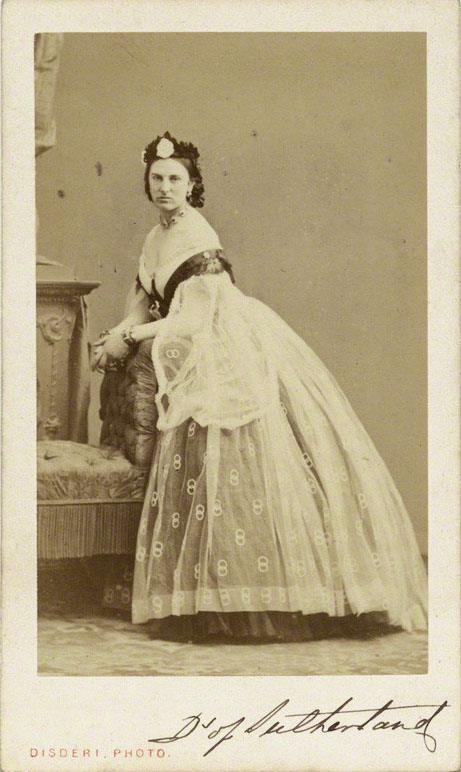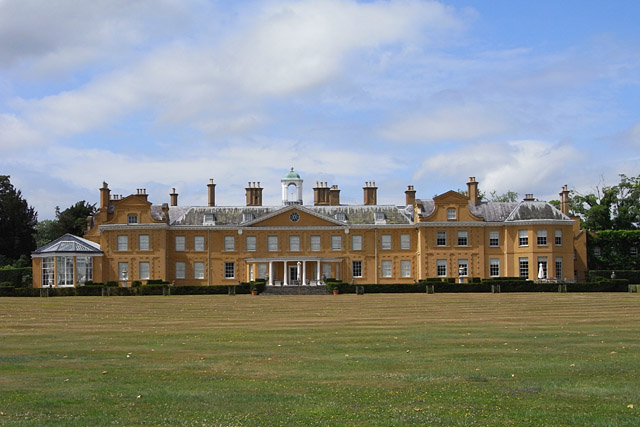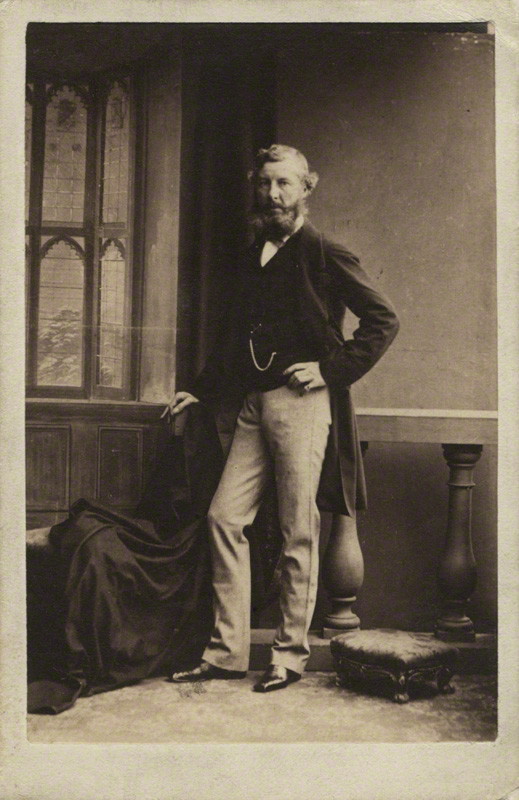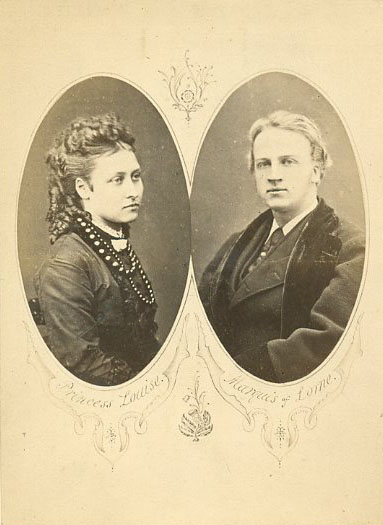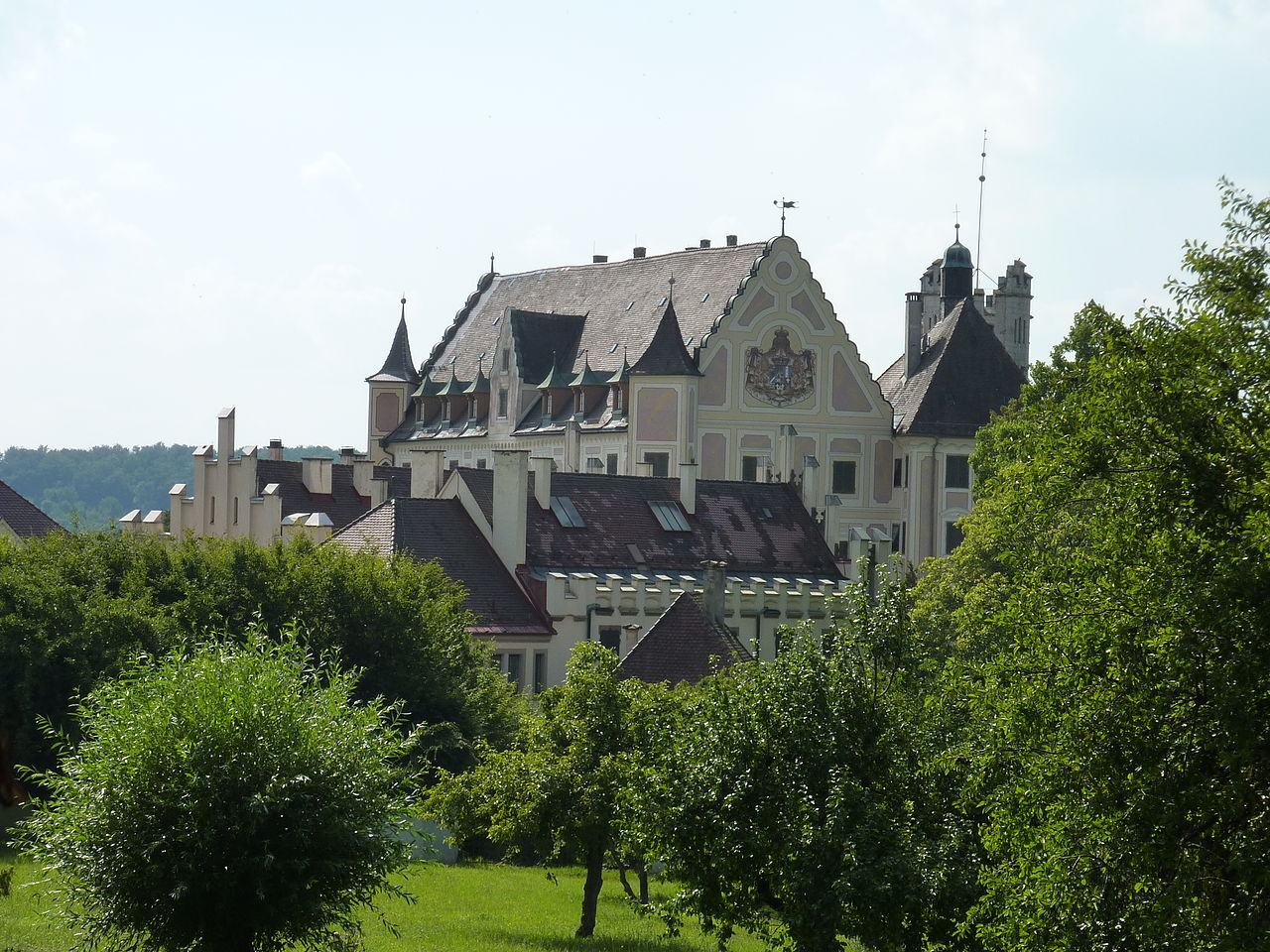by Scott Mehl © Unofficial Royalty 2018
Embed from Getty Images
On Friday, October 12, 2018, HRH Princess Eugenie of York married Mr. Jack Brooksbank at St. George’s Chapel, Windsor.
The Bride – HRH Princess Eugenie of York
Embed from Getty Images
Princess Eugenie Victoria Helena is the younger daughter of HRH Prince Andrew, Duke of York and the former Sarah Ferguson. She was born at Portland Hospital in London on March 23, 1990. Eugenie has an elder sister, Princess Beatrice. Her christening was held at the Church of St. Mary Magdalene in Sandringham, the first public christening of a member of the royal family.
She was educated at the Winkfield Montessori School, the Upton House School, Coworth Park School, St. George’s School and Marlborough College. Following a gap year, she attended Newcastle University, graduating in 2012 with a degree in English Literature and History of Art. The Princess interned with Christie’s and The Royal Collection Trust before taking a job as a Benefit Auctions Manager at Paddle8, an online auction firm located in New York City. Since July 2015, she has worked as an associate director at the Hauser & Wirth art gallery in London. She shared an apartment at St. James’s Palace in London with her sister, until moving to Ivy Cottage, on the grounds of Kensington Palace, in April 2018.
Unofficial Royalty: HRH Princess Eugenie
The Groom – Mr. Jack Brooksbank
Embed from Getty Images
John (Jack) Christopher Stamp Brooksbank was born May 3, 1986 to George and Nicola (née Newton) Brooksbank. He has one younger brother, Thomas. He and Eugenie are third cousins, 2 times removed, through their mutual descent from Thomas Coke, 2nd Earl of Leicester. Jack’s great-grandfather, Sir Jack Coke, served as Gentleman Usher to King George VI and Extra Gentleman Usher to Queen Elizabeth II. He also served as an Equerry to Queen Mary.
Jack attended the Stowe School and then embarked on a career in the hospitality industry. He worked at several pubs and restaurants, including the Admiral Codrington and the Markham Inn in Chelsea, and then worked as manager of the nightclub Mahiki, in Mayfair. He is currently the brand ambassador for Casamigos Tequila, and in 2017 established Jack Brooksbank Limited, a wholesale company for the sale of wine, beer, and other alcoholic beverages.
Unofficial Royalty: Mr. Jack Brooksbank
The Engagement
Embed from Getty Images
Eugenie and Jack were introduced by mutual friends in Verbier, Switzerland. The Princess was on holiday and Jack was working there at the time. After seven years together, Jack proposed to Eugenie while on holiday in Nicaragua at the end of 2017.
Embed from Getty Images
The groom had already purchased a large Padparadscha sapphire, and after returning home, the couple worked together to design the engagement ring. It features the oval-cut pink-orange sapphire surrounded by diamonds, on a gold band. Their engagement was formally announced on January 22, 2018, after which the couple met with the media and photographers in the Picture Gallery at Buckingham Palace.
Wedding Guests
850 guests filled St. George’s Chapel for Eugenie and Jack’s wedding. This included a large number of the extended royal family and countless friends and colleagues. Here is a partial list of those in attendance:
Embed from Getty Images
The Groom’s Family and Friends
Mr. and Mrs. George and Nicola Brooksbank
Mr. Thomas Brooksbank
Mr. and Mrs. David and Vanessa Brooksbank
Mr. Charles Brooksbank
Mrs. Amy Brooksbank Rodgers
Mr. and Mrs. Christopher Newton
Mr. John Newton
Mr. and Mrs. Alexander Farr
Mr. and Mrs. William Gayner
Mr. and Mrs. Rory Chichester
Embed from Getty Images
The Royal Family
The Queen and The Duke of Edinburgh
The Prince of Wales
The Duke and Duchess of Cambridge
Prince George of Cambridge (page boy)
Princess Charlotte of Cambridge (bridesmaid)
The Duke and Duchess of Sussex
The Duke of York and Sarah, Duchess of York
Princess Beatrice of York
The Earl and Countess of Wessex
Lady Louise Mountbatten-Windsor (special attendant)
Viscount Severn (special attendant)
The Princess Royal and Sir Timothy Laurence
Peter and Autumn Phillips
Zara and Mike Tindall
The Earl and Countess of Snowdon
Viscount Linley
Lady Margarita Armstrong-Jones
Lady Sarah and Daniel Chatto
The Duke and Duchess of Gloucester
The Duke of Kent
Lady Helen and Timothy Taylor
Prince and Princess Michael of Kent
Lord and Lady Frederick Windsor
Miss Maud Windsor (bridesmaid)
Lady Gabriella Windsor and Mr. Thomas Kingston
James Ogilvy
Zenouska Mowatt
Noticeably absent were The Duchess of Cornwall (previously scheduled engagements), The Duchess of Kent (mostly retired from royal life), and Princess Alexandra (recovering from a broken arm and recent surgery)
Embed from Getty Images
Royal Guests
Crown Prince Pavlos and Crown Princess Marie Chantal of Greece
Princess Maria-Olympia of Greece
Hereditary Prince Ernst-August and Hereditary Princess Ekaterina of Hanover
Prince Christian and Princess Alessandra of Hanover
Ms. Chantal Hochuli (formerly Princess Chantal of Hanover)
Embed from Getty Images
Some Notable Guests
James Blunt and Sofia Wellesley
Cressida Bonas
Naomi Campbell
Chelsy Davy
Olivier and Zoe de Givenchy
Cara Delevingne
Poppy Delevingne
Julian Fellowes and Emma Kitchener-Fellowes
Stephen Fry and Elliott Spencer
Pixie Geldof
Ellie Goulding
Ricky Martin and Jwan Yosef
James and Pippa (Middleton) Matthews
James Middleton
Demi Moore
Kate Moss
Guy Pelly
Zac Posen
Jamie Redknapp
Liv Tyler
Jack Whitehall
Robbie Williams and Ayda Field Williams
Eugenie and Jack also invited representatives from several of the charities they support, and members of the public, to be on the grounds of the chapel for the festivities.
The Wedding Attendants
Embed from Getty Images
Maid of Honour
- HRH Princess Beatrice of York (the bride’s sister)
Best Man
- Mr. Thomas Brooksbank (the groom’s brother)
Bridesmaids
- HRH Princess Charlotte of Cambridge (daughter of The Duke and Duchess of Cambridge)
- Miss Savannah Phillips (daughter of Peter and Autumn Phillips)
- Miss Isla Phillips (daughter of Peter and Autumn Phillips)
- Miss Mia Tindall (daughter of Zara and Mike Tindall)
- Miss Maud Windsor (daughter of Lord and Lady Frederick Windsor, and Eugenie’s goddaughter)
- Miss Theodora Williams (daughter of Robbie Williams and Ayda Field)
Page Boys
- HRH Prince George of Cambridge (son of The Duke and Duchess of Cambridge)
- Mr. Louis de Givenchy (son of Olivier and Zoe de Givenchy, friends of the couple)
In addition, Eugenie’s two younger cousins, the children of The Earl and Countess of Wessex, were Special Attendants. Lady Louise Mountbatten-Windsor accompanied the bridesmaids and pageboys, while Viscount Severn escorted Sarah, Duchess of York and Princess Beatrice down the aisle to their seats in the Quire.
The Wedding Attire
Embed from Getty Images
Princess Eugenie wore a dress designed by Peter Pilotto and Christopher De Vos of the British label Peter Pilotto. Consisting of several layers, each carefully designed to provide the desired silhouette, the dress featured a fitted bodice and a full pleated skirt. The neckline folded around the shoulders and down into a low back which continued into a full-length train. Princess Eugenie specifically requested a low back to show the scars from her corrective surgery for scoliosis as a child. For this reason, she also chose not to wear a veil. The fabric, a jacquard of silk, cotton, and viscose blend, incorporated several symbols with special meaning to the couple:
- Thistle – representing the couple’s fondness for Balmoral
- Shamrock – representing the bride’s maternal family’s Irish heritage
- York Rose – representing her father’s Dukedom
- Ivy – representing the couple’s home, Ivy Cottage at Kensington Palace
Embed from Getty Images
The wedding was the first time Princess Eugenie has been seen publicly in a tiara. While many expected she would wear her mother’s wedding tiara, she wore a tiara loaned to her by her grandmother Queen Elizabeth II. The Greville Emerald Kokoshnik Tiara was made by Boucheron in 1919 for The Hon. Mrs. Ronald Greville, a prominent member of British society and a noted philanthropist. Upon her death in 1942, Mrs. Greville left a large bequest of all of her jewelry to Queen Elizabeth (later The Queen Mother). This tiara was part of that bequest. In addition to Eugenie’s first tiara appearance, this is also the first time the tiara has been worn publicly since arriving in the vaults of Buckingham Palace 76 years ago. It is made of brilliant and rose-cut diamond pavé set in platinum, with six emeralds on either side of a large cabochon emerald in the center. Princess Eugenie also wore diamond and emerald drop earrings, a wedding gift from the groom.
The bride’s bouquet included lily of the valley, stephanotis pips, baby blue thistle, white spray roses, and trailing ivy. It also included sprigs of myrtle from Osborne House, in a tradition dating back 160 years. While visiting her husband’s grandmother in Germany, Queen Victoria was given a nosegay that contained some myrtle. A sprig from this was planted along the terrace walls at Osborne House and continues to flourish to this day. In 1858, Queen Victoria’s eldest daughter married and carried a sprig of this myrtle in her bouquet. Since then, nearly all royal brides in the British Royal Family have incorporated a sprig of this myrtle into their wedding bouquet. In keeping with a tradition started by The Queen Mother following her wedding in 1923, Princess Eugenie’s flowers were later taken to Westminster Abbey and placed on the Tomb of the Unknown Warrior.
Embed from Getty Images
The groom and his best man wore traditional morning suits. Both wore tie pins featuring the white rose of york and the padparadscha sapphire, gifts from the bride’s mother.
The Ceremony
Embed from Getty Images
The bride arrived at St. George’s Chapel, accompanied by her father The Duke of York in a 1977 Rolls Royce Phantom VI, given to The Queen in 1978 for her Silver Jubilee. This was the same car used by Catherine Middleton for her wedding to Prince William in 2011. She entered the chapel on her father’s arm and was met at the Quire Screen by the groom and the Dean of Windsor. Following the introduction, all processed through the Quire to the altar. The wedding ceremony was conducted by the Dean of Windsor, David Connor, and the prayers were led by the Archbishop of York, John Sentamu. The ceremony itself was very traditional, with the couple exchanging their vows, and the groom placing the wedding ring – made from a piece of Welsh gold given to them by The Queen – on the bride’s finger. Readings were given by Charles Brooksbank, the groom’s cousin, and Princess Beatrice of York, the bride’s sister. The music was provided by The Royal Philharmonic Orchestra and the State Trumpeters of the Household Cavalry. Andrea Bocelli performed two solos during the service, and additional signing was provided by the Choir of St. George’s Chapel.
Embed from Getty Images
After the ceremony, the couple along with their parents and siblings went to the North Quire Aisle to sign the Registers. Upon returning, the National Anthem was played after which the bride and groom paid homage to The Queen before processing out of the chapel through the West Door. There, the steps were lined with members of the Nijmegen Company of the Grenadier Guards, of which the Duke of York is Colonel.
Embed from Getty Images
The couple greeted the crowds gathered outside the chapel with waves and a kiss before getting into the Scottish State Coach, pulled by four Windsor Greys, for a carriage procession through Windsor. As the procession departed, pipers from the 2nd Battalion, Royal Regiment of Scotland, performed from the Garter Tower.
Embed from Getty Images
Following the wedding and carriage procession, Eugenie and Jack returned to Windsor Castle where The Queen hosted a reception.
The Wedding Banquet and Receptions
Embed from Getty Images
Following the wedding and carriage procession, Eugenie and Jack returned to Windsor Castle where The Queen hosted a reception in St. George’s Hall. After greeting their guests, the couple posed for formal photographs with the bridal party and their families. The centerpiece of the reception was the five-tiered wedding cake. Made by Sophie Cabot, the cake features 3 tiers of red velvet cake and 2 tiers of chocolate sponge cake, all covered with butter cream and white icing. The bottom tier features the couple’s initials in gold, surrounded by hand-painted blackberry bramble. Keeping with the autumnal theme, the cake is adorned with ivy, fall leaves, and berries, which cascade down from the top tier. These are all made of sugar and hand-painted.
Embed from Getty Images
The couple departed the castle in an Aston Martin DB10 – a one-of-a-kind model made specifically for the James Bond movie ‘Spectre’ – for Royal Lodge, where the bride’s parents hosted a black-tie reception that evening. The following day, the festivities continued with a carnival-themed party at Royal Lodge.
This article is the intellectual property of Unofficial Royalty and is NOT TO BE COPIED, EDITED, OR POSTED IN ANY FORM ON ANOTHER WEBSITE under any circumstances. It is permissible to use a link that directs to Unofficial Royalty.
